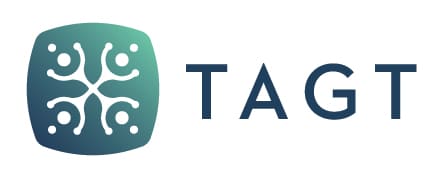Reflect for a moment on that first day of class: walking into the classroom, triple checking the room number, searching for a friendly face among the students, and the relief that follows when you are warmly received by the class. Students are seeking this feeling of acceptance every day in their classrooms. They want to be accepted and see themselves reflected in the faces of their peers and the curriculum.
As educators, we are entrusted with the responsibility of providing a safe, caring, inclusive learning environment, where all students have the opportunities to achieve beyond preconceived ideas and expectations. Reaching every child every day is possible through culturally responsive teaching. This pedagogy “affirms the cultures of students, views the cultures and experiences of students as strengths, and reflects the students’ cultures in the teaching process” (Gollnick & Chinn, 2011, p. 363). In gifted education, there are historically underrepresented cultural groups. The United States Department of Education (1993) defined giftedness as “children and youth with outstanding talent who perform or show the potential for performing at remarkably high levels of accomplishments when compared with others of their age, experience, or environment” (p. 3). The U.S. Department of Education further elaborated that “outstanding talents are present in children and youth from all cultural groups, across all economic strata, and in all areas of human endeavor” (p. 3). This broad federal definition of gifted youth recognizes youth’s potential to perform at high levels as well as the fact that gifted youth can be found in all economic strata and cultural groups. Yet, in 2017, many culturally and linguistically diverse gifted youth are still being underidentified or underserved due to misconceptions as well as rigid policies and procedures within gifted education programs in schools.
This article explores some stereotypes and misconceptions about culturally diverse groups and provides some suggestions for ways of including students who are gifted across cultures. It is important to note that generalizations about cultural groups do not necessarily apply to all members of a cultural group. Culture is fluid and changes based on individual experiences. For example, a person who is first-generation American may feel more closely tied to his homeland than the fourth-generation American. Similarly, a person who grew up in a small town in southern United States and then moved to a large urban center in the north may find that her cultural expectations and values change. The culturally responsive educator acknowledges the limitations of stereotypes and generalizations and looks to understand the unique characteristics of each child’s culture.
Culture is often thought of according to the Iceberg Model (Goodman, 2002). In this model, surface-level cultural traits (the tip of the iceberg) such as traditional dress, food, language, or holidays are not the focus of learning. In schools and society, we tend to focus on the surface-level traits, designating certain days for celebration, dress-up days, or lunchroom specials. But, if we look below the iceberg, into the heart of it, we can find strong characteristics of culture—those that often define a culture and offer insight as to what is valued by the culture. It is my hope that by closely examining some generalizations, stereotypes, and misconceptions, courageous conversations can be initiated, gifted education programs and policies reviewed, and positive changes implemented.
Culturally Diverse Groups
Gifted Native American Youth
Gifted Native Americans are one of the least researched populations in the field of gifted education (Gentry & Fugate, 2012; Gentry, Fugate, Wu, & Castellano, 2014; Yoon & Gentry, 2009). The lack of research and understanding of this cultural group tends to lead to stereotyping and generalization of the culture. Frequently, Native Americans are lumped together as one group rather than recognizing the unique characteristics of each tribe. The Navajo Nation is composed of 565 recognized tribes, each with their own unique cultural groups (Gentry & Fugate, 2012). Research tends to focus on deficits within the culture, highlighting the high rates of poverty, violence, substance abuse, and learning deficits (National Caucus of Native American State Legislators, 2008). Deficit thinking does not recognize cultural differences as strengths and often sets up the students for failure before they have even begun their educational journey. As a result of the lack of understanding and preconceived notions about their culture, gifted Native American youth may not experience positive development and nurturing of their gifts in schools.
The Native American culture, as a whole, values a matriarchal, collective society in which there are high levels of respect for elders and leaders. Here, the good of the whole society is valued over the achievements of an individual (Gentry & Fugate, 2012). This is important to understand in recognizing a gifted Native American student, as he may not exhibit the characteristics of a traditional gifted learner, who focuses on his own achievements and working independently. Rather, the Native American child’s gifts and talents may be showcased in his abilities to work together and leadership skills. Oral storytelling is of great value to the culture, as it is a way to ensure that traditions, spirituality, and cultural knowledge are passed onto the next generation. Oral tradition is a great responsibility taught to the tribe by the tribal and spiritual leaders (Christensen, 1991). Gentry (2015) stated that gifted Native Americans may also be overlooked in a classroom because the students tend to observe first before joining in the activity; this learning style can be linked to their culture where children learn from their elders by watching and listening to oral stories. Because this is not a characteristic of the traditional gifted learner, this child may not be identified for gifted services.
Native American languages and dialects are important in maintaining the rich culture and oral history. As a result of the value placed on the native language, many Native American students are bilingual. Including these languages as part of a bilingual education program is important to the identification and retention of gifted Native Americans. The importance of oral traditions, spirituality, and naturalistic learning must be taken into account when providing instruction for gifted Native American youth. Many Native American students attend school on reservations where they are able to learn about their culture in addition to the standardized curriculum. This is an excellent opportunity to reach out and learn about the culture, as many of the teachers are not Native American. Unfortunately, too few teachers capitalize on this learning opportunity and, instead, choose to focus on the deficits and not on learning about the culture of the students.
Hispanic American Gifted Students
Hispanic students are the fastest growing population in public schools due to the influx of immigration (U.S. Census Bureau, 2013). These students bring many gifts and talents to the classroom, but frequently are underidentified and underserved. The culturally responsive educator recognizes this disproportionality and seeks to address it. Looking beyond the surface-level characteristics, the Hispanic culture is characterized as a collective society that places high value on Catholicism, family, and traditions (Esquierdo & Arreguin-Anderson, 2012; Lara-Alecico & Irby, 2007). One example is the importance of the collective society, where the good of the whole is valued over the good of the individual. This may be seen in the classroom, where the student defers to a classmate in a decision or misses class to help his family with the family business. In this culture, it is very important to be able to provide for the family, and often the male and female roles are traditionally assigned. For example, a female student may not demonstrate leadership skills in the classroom because she is deferring to her male counterparts. Similarly, a gifted Hispanic student may not have the parental pressure to be at the top of his class as the focus is, instead, on providing for his family. This may be in contrast to a typical gifted child, who may strive to be the top student and who takes charge and sticks to his own idea (Lara-Alecico & Irby, 2007). These are just a few examples of how a gifted Hispanic student may not demonstrate the traditional characteristics of a gifted student because of his cultural background.
As a culturally responsive educator, it is important to recognize the influence of culture on the classroom and be aware of the impact it has on the representation of giftedness. One of the major causes for underrepresentation of gifted Hispanic youth is linked to language barriers. Many Hispanic students are recent immigrants who are bilingual or English language learners. These students, who are learning the English language, are placed into ESL classes and not considered for identification to participate in gifted programs because schools focus on the perceived deficit in the students rather than building on the students’ gifts and talents. Although there are some districts that are using nontraditional methods of identification and testing students in their native language, there are still far more that struggle with including underserved populations.
Asian American Gifted Students
Asian Americans are often cited as being overrepresented in gifted program, yet when one looks closely at the numbers, it is obvious that this is not true across all Asian cultural groups. Pew Research Center (2013) reported that 74% of Asian American adults were born overseas. As a whole, Asian American immigrants have experienced economic, social, and academic success in the United States (Yoon & Gentry, 2009). However, these positive effects do not apply to all 50 of the ethnic groups that make up the Asian culture. Typically, the academic success of Asian Americans is limited to those who identify as Chinese, Japanese, Korean, and Filipino (Yoon & Gentry, 2009). Cultural norms within these ethnic groups place a high value on education, and it is a collective society who places a high amount of respect on educators. As a result of this overgeneralization, Asian Americans have been stereotypically identified as smart overachievers who are model students. Although the Asian culture is disciplined and places high value on hard work, not all children have parents who demand excellence and penalize their children for anything less than perfect. Within the culture, because of the expectation for acceleration, there may be undue pressure on students to achieve as well as a desire to keep quiet any types of learning difficulties (Yoon & Gentry, 2009). Acknowledging the stereotypes and generalizations placed on Asian Americans, the culturally responsive educator looks beyond surface-level characteristics and learns about the child’s cultural background.
African American Gifted Students
Deficit thinking extends to the African American culture, where educators hold stereotypical views regarding poverty, crime, and a negative self-fulfilling proficiency (Ford & Grantham, 2003). The culturally responsive educator looks past these negative perceptions and views unique cultural characteristics as dynamic and positive. Within the African American culture, high value is placed on a matriarchal family, religion, and heritage. Many African American mothers are single parents raising their children. As an educator, reaching out and valuing the parent in the decision-making process is essential to not only increasing identification, but also improving retention rates of African American students in gifted programming. One would be remiss to not recognize the significant role that United States history has played in the African American culture. The culturally responsive educator not only is knowledgeable about U.S. history but also seeks to identify ways to include African American heritage in the classroom. African American males are one of the groups of students in the United States who are at the greatest risk for underachieving and not graduating from high school. The phenomena “Acting White” is characterized by African Americans being called out by their peers for trying to be too white because they are talking, dressing, or behaving in a way that is consistent with White behavior (Ford & Grantham, 2003). Unfortunately, this negative notion has extended to the classroom where students will purposefully answer questions wrong and not turn in or fail assignments in an effort to fit in with their peer group. Some gifted African American students have turned down gifted services because they do not want to be isolated from their peer group and/or do not see themselves reflected in the gifted classroom.
The Value of Gifted Programming
Native American, Hispanic American, Asian American, and African American cultures place different levels of value on education and on gifted education. The value a culture places on gifted education plays a significant role in the identification of and services for gifted students. Christensen (1991) stated that the Native Americans believe the only gifted people within their culture are the shamans (holy men) and medicine people. These gifts are bestowed on them by the Creator with specific directions and must be utilized for the purposes of improving the lives of future generations (Christensen, 1991; Gentry et al., 2014). Therefore, when a parent or student is approached by a school district about the gifted program, they may not believe the youth is gifted or that he should receive services. In the Hispanic culture, children who are from Mexico are bringing very different educational experiences to the classroom. In Mexico, the educational system is structured differently and there is no gifted programming. Parents and students may not understand what it means to be gifted or how the services would benefit the child. Furthermore, because of the focus on providing for the family, gifted education may not be valued, as the need to provide for the family can be met through traditional schooling. African American parents may also approach gifted education with skepticism based on their personal experiences in schools or their desire to fit in with their cultural group. The cultural group most likely to value gifted education are the Asian Americans; however, that does not mean all Asian American families understand gifted education. Educating parents, students, and the community about what it means to be in a gifted and talented program is important in reversing the underrepresentation of gifted youth from various cultural backgrounds.
Guidelines for the Culturally Responsive Classroom
Recognize and Understand Your Own Cultural Background, Values, and Beliefs
Before educators are able to understand the culture of the students in their classrooms, they must first understand themselves. Cultural background influences everyone and impacts values decision making. Having courageous conversations about race, ethnicity, gender, sexual orientation, religion, and socioeconomic status is a critical first step to recognizing and understanding one’s own cultural background. After reflecting on these conservations, and acknowledging one’s own cultural beliefs and biases, educators will be able to step back and separate from their personal opinions, which may influence their teaching. This separation is not a departure from personal beliefs and values but rather a conduit to viewing the “other” with an open mind, ready to learn and begin to understand other cultural groups. As educators, we must be able to look beyond surface-level cultural traits in order to help all students achieve at the highest levels.
Embrace and Engage the Students’ Cultures
The culturally responsive educator reaches out to the students in his class, asking about traditions, customs, food, and language in an effort to learn about the students’ cultures. This learning goes beyond the surface-level understanding and explores the heart of the cultural group. By seeking out the students’ culture, the educator is showing the students that their culture has value and worth. In turn, students’ self-efficacy increases as they are able to share their pride in their cultural values and beliefs while experiencing feelings of belonging in the gifted community. Their differences are not viewed as deficits but rather as strengths. Recognition of cultural differences, not only in the classroom, but also in the identification process, opens the door for gifted youth who may not fit the traditional characteristics of schoolhouse giftedness.
Actively Work on Being Culturally Aware and Knowledgeable
Being culturally aware and knowledgeable is a lifelong process. Just as the students in the classroom change every year, educators must familiarize themselves with their students’ learning styles and preferences, making it essential to learn about their cultural backgrounds. Culture is influenced by many factors including current events around the world. Cultural awareness may begin in a class lecture, day of celebration, or professional development workshop, but if it is not successfully infused into daily routines then it will not be effective and students will continue to feel isolated within the gifted community.
There are five keys to identifying and retaining gifted students across cultures in gifted programming.
- Early identification. Early identification provides a network of support to the gifted child and family, which research shows is critical to success. Providing academic challenge for gifted learners is important in fostering the love of learning as is being in peer group that can foster the social-emotional development of the gifted learner.
- Scaffolding. Services provided to these students should provide scaffolding in areas of weakness while simultaneously highlighting areas of strength. For example, an English language learner may need ESL strategies and services but, at the same time, be given opportunities to complete gifted assignments in his native language. Focusing only on deficits lowers the child’s self-efficacy, decreases motivation, and propels the child toward a self-fulfilling prophecy of low expectations.
- Enrichment opportunities and showcases. Enrichment experiences and opportunities for students are essential, as they help to close some gaps; however, students need to have opportunities to showcase their gifts and talents in their own culture. For example, in the Native American culture, oral storytelling is a large part of the culture. This needs to be incorporated into gifted services for Native American students so that they see their own culture being valued and reflected in the gifted program.
- Curriculum. The curriculum should be related to the students’ cultures and differentiated for learning styles. Differentiation is an excellent way to meet the needs of learners and provide culturally relevant learning opportunities. Infusing culture into the curriculum has an added benefit of helping all students learn about different cultures while exploring their own cultural identities and understandings of the “other.”
- Parental/community support. Increasing parental and community support for underserved populations is beneficial in opening communication channels, but also in changing misconceptions about what it means to be gifted, and may mend broken bonds between the school and parents (Demmert, Grissmer, & Towner, 2006). Furthermore, by developing an understanding of the social and political mores of the community, the school district shows the community that it values unique cultural characteristics.
As educators, we want all of our students to be successful and experience joy in learning. Culturally responsive teachers acknowledge that there are gifted, creative, and talented youth across all cultural groups. Working together, as gifted educators, we can be the catalyst of change, providing culturally responsive programs that develop, serve, and nurture gifted learners across all cultures.
References
Christensen, R. A. (1991). A personal perspective on tribal-Alaska Native gifted and talented education. Journal of American Indian Education, 31, 10–14.
Demmert, W. G., Grissmer, D., & Towner, J. (2006). A review and analysis of the research on Native American students. Journal of American Indian Education, 31, 24–47.
Esquierdo, J. J., & Arreguin-Anderson, M. (2012). The “invisible” gifted and talented bilingual student: A current report on enrollment in gifted and talented programs. Journal for the Education of the Gifted, 35, 35–47.
Ford, D. Y., & Grantham, T. C. (2003). Providing access for culturally diverse gifted students: From deficit to dynamic thinking. Theory Into Practice, 42, 217–225.
Gentry, M. (2015, November). Identifying and serving gifted and talented Native American students: Future directions for research, partnerships, and practices. Paper presented at the annual conference of the National Association for Gifted Children, Phoenix, AZ.
Gentry, M., & Fugate, M. (2012). Gifted Native American students: Underperforming, under-identified, and overlooked. Psychology in the Schools, 49, 631–646.
Gentry, M., Fugate, C. M., Wu, J., & Castellano, J. A. (2014). Gifted Native American Students: Literature, lessons, and future directions. Gifted Child Quarterly, 58, 98–110.
Gollnick, D. M., & Chinn, P. C. (2011). Multicultural education in a pluralistic society (11th ed.). Upper Saddle River, NJ: Pearson Education.
Goodman, M. (2002). The iceberg model. Retrieved from http://www.ascd.org/ASCD/pdf/journals /ed_lead/el200910_kohm_iceberg.pdf
Lara-Alecio, R., & Irby, B. (2007). The culturally and linguistically diverse gifted. In C. Reynolds (Ed.), Encyclopedia of special education (pp. 506–510). New York, NY: John Wiley.
National Caucus of Native American State Legislators. (2008). Striving to achieve: Helping Native American students succeed. Retrieved from http://www.ncsl.org/Portals/1/documents/statetribe/strivingtoachieve.pdf
Pew Research Center. (2013). The rise of Asian Americans. Retrieved from http://www.pewsocialtrends.org/2012/06/19/the-rise-of-asian-americans/
U.S. Census Bureau. (2013). Profile America facts for features: Hispanic heritage month. Retrieved from https://www.census.gov/newsroom/releases/archives/facts_for_features_special_editions/cb13-ff19.html
U.S. Department of Education. (1993). National excellence: A case for developing America’s talent. Washington, DC: U.S. Government Printing Office.
Yoon, Y. S., & Gentry, M. (2009). Racial and ethnic representation in gifted programs: Current status of and implications for gifted Asian American students. Gifted Child Quarterly, 53, 121–136.
Katie D. Lewis, Ed.D., is an assistant professor of education in the Department of Education at York College of Pennsylvania. She spent 6 years living and working on the border of Southwest Texas at Texas A&M International University. She currently serves as the TAGT Research Division Chair and NAGC Professional Development Communications Chair. She earned her doctorate from William & Mary in 2009. Her research interests include teacher preparation programs, motivation to learn, and the underrepresentation of gifted ELLs.






